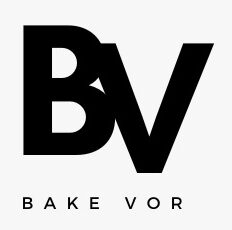
Budgeting Tools for Managing Finances
Effective financial management is crucial for achieving both personal and business goals. One of the essential components of financial management is budgeting. Budgeting helps individuals and businesses plan for future expenses, save for long-term goals, and avoid financial pitfalls. With the advent of technology, numerous budgeting tools have emerged, making the process more straightforward and efficient. This article will explore various budgeting tools that can help manage finances effectively.
Why Budgeting is Important
Before diving into specific tools, it’s essential to understand why budgeting is crucial. Budgeting provides a clear picture of income versus expenses, helping to identify spending patterns and areas where one can save. It also assists in setting financial goals, such as saving for a house, retirement, or a vacation. Additionally, a well-structured budget can prevent debt accumulation and improve overall financial health.
Types of Budgeting Tools
Budgeting tools come in various forms, including apps, software, spreadsheets, and traditional pen-and-paper methods. Each has its own set of features and benefits, catering to different preferences and financial situations.

1. Budgeting Apps
Budgeting apps are highly popular due to their convenience and user-friendly interfaces. Here are some of the top budgeting apps available:
a. Mint
Mint is a free app that aggregates all your financial accounts, including bank accounts, credit cards, and investments, into one place. It provides a comprehensive overview of your finances, tracks spending, and offers personalized budgeting tips. Mint also sends alerts for due bills and unusual transactions, ensuring you stay on top of your financial game.
b. YNAB (You Need A Budget)
YNAB follows a proactive budgeting approach, encouraging users to allocate every dollar to a specific purpose. The app emphasizes financial planning and goal-setting, helping users break the paycheck-to-paycheck cycle. YNAB offers detailed reports and educational resources, making it an excellent choice for those serious about budgeting.
c. PocketGuard
PocketGuard simplifies budgeting by showing users how much disposable income they have after accounting for bills and savings goals. The app links to your bank accounts and categorizes expenses, providing insights into spending habits. PocketGuard’s “In My Pocket” feature helps users avoid overspending by highlighting available funds.
d. EveryDollar
Developed by financial expert Dave Ramsey, EveryDollar is a zero-based budgeting app that assigns every dollar a job. The app is easy to use and offers both a free version and a premium version with additional features like bank account syncing. EveryDollar’s simple interface makes it suitable for beginners.
2. Budgeting Software
For those who prefer desktop applications, budgeting software offers advanced features and robust financial tracking.
a. Quicken
Quicken is a comprehensive personal finance software that has been around for decades. It offers a wide range of features, including budgeting, investment tracking, bill management, and more. Quicken’s powerful reporting tools provide detailed insights into your financial health.
b. Microsoft Excel
Excel is a versatile tool that can be customized to create detailed budgets. There are numerous budgeting templates available online, or you can create your own. Excel’s flexibility allows for complex calculations and data visualization, making it ideal for those who prefer a hands-on approach to budgeting.
c. Personal Capital
While primarily an investment tracking tool, Personal Capital also offers robust budgeting features. It provides a holistic view of your finances, including net worth, cash flow, and spending trends. Personal Capital’s retirement planning tools are particularly useful for long-term financial planning.
3. Spreadsheets
Spreadsheets are a traditional yet effective way to manage budgets. They offer complete control over data and can be customized to suit individual needs.
a. Google Sheets
Google Sheets is a free, cloud-based spreadsheet tool that allows for real-time collaboration. Numerous budgeting templates are available, or you can create a personalized budget from scratch. Google Sheets’ accessibility and ease of use make it a popular choice for budget-conscious individuals.
b. Tiller Money
Tiller Money combines the flexibility of spreadsheets with automated data entry. It links to your financial accounts and updates your budget automatically. Tiller Money offers various templates and customization options, making it a powerful tool for managing finances.
4. Traditional Methods
While digital tools are convenient, some people prefer traditional budgeting methods for their simplicity and tangibility.
a. Pen and Paper
Writing down your budget can be a mindful exercise that reinforces spending discipline. A simple notebook can be used to track income, expenses, and savings goals. This method is free and accessible to everyone, though it requires more manual effort than digital tools.
b. Envelope System
The envelope system involves allocating cash for different spending categories and placing it in labeled envelopes. Once the cash in an envelope is spent, no more money can be used for that category until the next budgeting period. This method helps control spending and encourages mindful financial decisions.
Key Features to Look for in Budgeting Tools
When selecting a budgeting tool, consider the following features to ensure it meets your needs:
a. Ease of Use
The tool should be intuitive and easy to navigate. A user-friendly interface makes it more likely that you’ll stick to your budgeting routine.
b. Account Integration
Look for tools that can link to your financial accounts, such as bank accounts, credit cards, and investment accounts. This integration ensures that your budget is always up to date with real-time data.
c. Customization
The ability to customize categories, goals, and reports is essential for a personalized budgeting experience. Ensure the tool allows you to tailor your budget to your unique financial situation.
d. Reporting and Analytics
Detailed reports and analytics help you understand your spending patterns and make informed financial decisions. Look for tools that offer comprehensive insights into your financial health.
e. Security
Since budgeting tools often require access to sensitive financial information, security is paramount. Choose tools with robust security measures, such as encryption and multi-factor authentication.
Benefits of Using Budgeting Tools
Using budgeting tools offers numerous advantages that contribute to better financial management:
a. Increased Awareness
Budgeting tools provide a clear overview of your financial situation, helping you become more aware of your income and expenses. This awareness is the first step toward making positive financial changes.
b. Goal Setting and Tracking
Whether you’re saving for a down payment on a house or planning a vacation, budgeting tools help set and track financial goals. They provide motivation and a sense of accomplishment as you progress toward your objectives.
c. Expense Management
Tracking expenses is crucial for identifying unnecessary spending and areas where you can cut back. Budgeting tools categorize expenses, making it easier to see where your money is going.
d. Debt Reduction
For those struggling with debt, budgeting tools can help create a repayment plan. By allocating funds to debt repayment and tracking progress, you can work toward becoming debt-free.
e. Financial Security
A well-managed budget leads to better financial security. By planning for emergencies, saving for the future, and avoiding debt, you can achieve greater peace of mind.

Challenges of Budgeting and How to Overcome Them
While budgeting tools are beneficial, they can present challenges. Here are some common obstacles and strategies to overcome them:
a. Staying Consistent
Maintaining a budget requires consistency and discipline. To stay on track, set reminders to review your budget regularly and adjust as needed. Choosing a tool that you find enjoyable to use can also increase consistency.
b. Dealing with Irregular Income
For those with irregular income, such as freelancers or gig workers, budgeting can be tricky. One strategy is to base your budget on your lowest monthly income and save any extra earnings. This approach ensures that you can cover essential expenses even during lean months.
c. Unexpected Expenses
Unexpected expenses, such as medical bills or car repairs, can derail a budget. To mitigate this, include an emergency fund in your budget. Regularly contribute to this fund to cover unforeseen costs without disrupting your financial plan.
d. Adapting to Changes
Life circumstances change, and so should your budget. Be flexible and willing to adjust your budget as needed. Regularly review and update your budget to reflect changes in income, expenses, and financial goals.
Conclusion
Budgeting tools are invaluable for managing finances and achieving financial goals. Whether you prefer apps, software, spreadsheets, or traditional methods, there is a budgeting tool to suit your needs. By choosing the right tool and staying consistent with your budgeting efforts, you can gain control over your finances, reduce debt, and build a secure financial future. Start exploring the various budgeting tools available today and take the first step toward financial empowerment.





One Comment
Pingback: